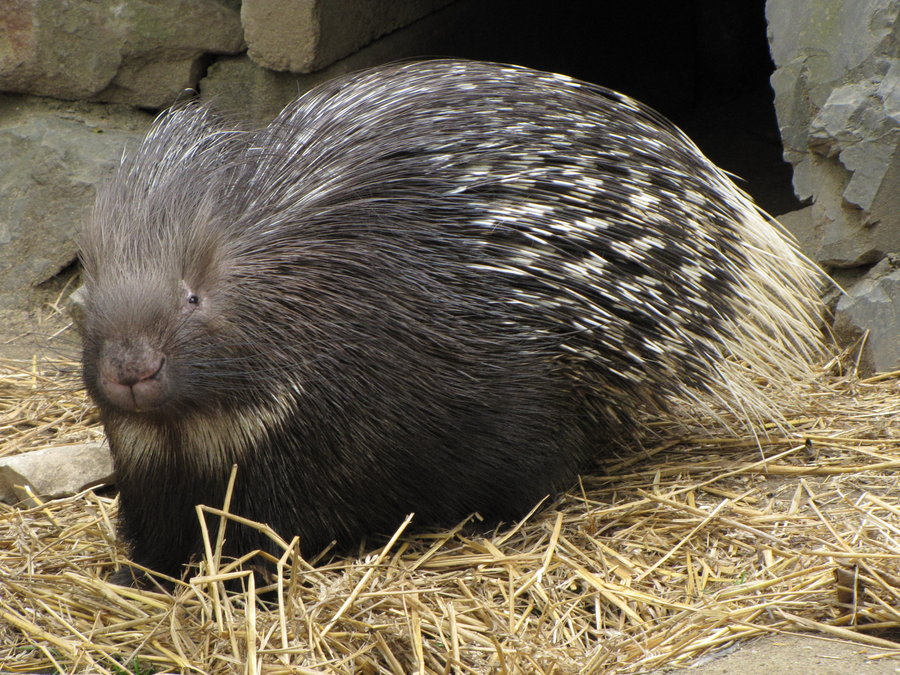Indian crested porcupine: Red Data Book of Armenia

Old World porcupines - Hystricidae
Status. A species of limited and fragmented distribution. According to IUCN criteria categorized as Vulnerable VU B2a.
Distribution. Asia Minor, Middle East, Central Asia, Levant, Western Arabia, South Caucasus, Southern Kazakhstan, India, Tibet, Sri Lanka. The subspecies is spread over Asia Minor, Southern and Southwestern Armenia, Nagorno Karabakh, Talysh Mts. and, most likely, Nakhichevan Republic.
Distribution in Armenia. Inhabits the Syunik Province, Khosrov Forest Reserve, Artanish Peninsula and the Vayots Dzor Province at 550–1900 m above sea level.
Habitats. Prefers the cliffy habitats with dense shrubs and herbage. Occurs in canyons and riverine areas with tamarisk thickets and rocky outcrops. Sometimes lives in sparse arid forests (sibljak) and juniper sparse forests, also with rocks and cliffs.
Biological traits. Leads very wary and cryptic life, remaining concealed during the daytime. Active only during the night. It digs complicated, long (up to 20 m) and ramified burrows, but can frequently live in caves, grottos, cavities between stones and crevices. Feeds on herbs, bulbs, rootstocks, agricultural crops, nuts, fruits and berries. Enjoys windfall fruits and ripe grapes. In winter eats tree bark and young sprouts of trees and scrubs. Does not hibernate, but keeps dormancy in winter. Reproduces once a year, from March to late April. The litter consists of 2–4 offspring which become sexually mature by the second year of their life.
Population size and its trends. A rare species of shrinking and fragmented range and very low numbers. In the Noravank Canyon the population is locally extinct, the same is most likely true also for individuals from the Arpi riverside.
Major threats. Human activities within the species range, particularly changes in stream courses along the natural canyons, establishment of reservoirs in suitable canyons and poaching.
Conservation measures. Protected in Khosrov Forest Reserve, Shikahogh Reserve and the Artanish reserve zone of Sevan National Park and Arevik National Park. It is essential to strengthen anti–poaching activities and to minimize the disturbance factors within the porcupine habitats.
Suggestions
 The Ministry of Environment sent a letter international partners to draw their attention to the real danger of environmental disasters as a result of Azerbaijan's large-scale aggression towards the territory of Armenia
The Ministry of Environment sent a letter international partners to draw their attention to the real danger of environmental disasters as a result of Azerbaijan's large-scale aggression towards the territory of Armenia
 Vicia pisiformis: Red Data Book of Armenia
Vicia pisiformis: Red Data Book of Armenia
 Vavilovia formosa: Red Data Book of Armenia
Vavilovia formosa: Red Data Book of Armenia
 Trigonella capitata: Red Data Book of Armenia
Trigonella capitata: Red Data Book of Armenia
 Trigonella astroides: Red Data Book of Armenia
Trigonella astroides: Red Data Book of Armenia












